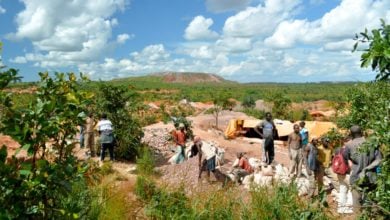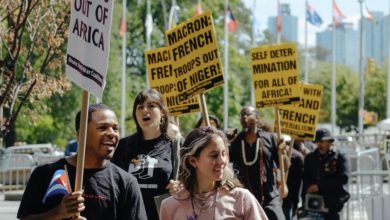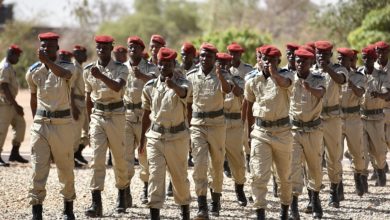A general strike began in Nigeria Jan. 9 in response to the government’s Jan. 1 lifting of fuel subsidies at the behest of the International Monetary Fund. The two main Nigerian trade union federations, the Nigeria Labour Congress and the Trade Union Congress of Nigeria, quickly called for a general strike. The unions initially vowed to continue with the strike until the fuel subsidy was reinstated. On Jan. 1, Nigerian President Goodluck Ebele Jonathan had announced that the fuel subsidy would be immediately withdrawn. The subsidies were worth up to $8 billion a year, and their rapid lifting led to a doubling of petrol prices.
Within days of the lifting of the subsidy, a liter of fuel had risen in price from 65 naira, or $0.40, to more than 140 naira, almost a U.S. dollar. Nigerians used to pay about $1.51 per gallon; the European average is $5-6 per gallon, while the U.S. average is $3-3.70 per gallon. These figures can be compared to the price of fuel in other oil-producing nations like Venezuela, Kuwait and Saudi Arabia where people pay about $0.12, $0.78 and $0.91, respectively.
This hike in fuel prices was forced on Nigeria and other African nations by the International Monetary Fund due to supposedly rising global oil prices and the European recession. The managing director of the IMF, Christine Lagarde, visited Nigeria and met with Jonathan in December 2011 to drive home this directive.
The IMF, no friend to workers and oppressed people, has promoted ending the subsidies because it claims subsidies do not help the poor while promoting corruption. The truth of that matter is that corruption is the outward expression of the true nature of imperialism. Corruption is particularly advantageous to the inherent aims of imperialism, which is expanding exploitation and domination.
As far as the impact of subsidies on the poor, the immediate effect of lifting the subsidy in Nigeria was a drastic increase in the cost of living, including a hike in transportation and food costs, in a country where 70 percent of the population of 160 million live in dire poverty. Mass mobilization protests began immediately on Jan. 2 all across Nigeria, and within a week, over 100,000 people had taken part in demonstrations in all of regions of the country.
The two largest cities in Nigeria, Lagos and Kano, were effectively shut down, and the strike has been equally successful in the capital of Abuja and other major urban areas, including Kaduna and Benin City.
Nigerians adhered to the general strike by refusing to go to work or school. In Lagos, tens of thousands of people gathered in Gawi Fawehinmi Park on Jan. 9. Many sang anti-government songs and carried placards reading, “Jonathan must go now” or “Revolution Now! They have the guns—We have the guts.”
‘Liberation Square’ and ‘Occupy Nigeria’
Hundreds of doctors and nurses participated, offering to provide medical attention to protesters in response to attacks by security forces. In Kano, thousands blocked main roads, forced gas stations to close and surrounded the home of the Nigerian central bank chief Lamido Sanusi. Protesters renamed the city’s main square “Liberation Square,” taking inspiration from the Egyptian revolution and Cairo’s Tahrir (Liberation) Square.
Some Nigerian protesters even began referring to the movement as “Occupy Nigeria,” linking its aspirations to the Occupy movement in the U.S. Simultaneously in London, hundreds of people gathered outside the Nigerian High Commission for a solidarity protest organized by Nigerian student and youth organizations. In the United States, Nigerian activists led a protest in front of the World Bank headquarters in Washington, D.C., as well as in New York City.
In multiple Nigerian cities, security forces responded to the protests with violence. In Kano, police shot more than a dozen people on Jan. 9. At least three protesters in Kano and Lagos died from either gunshot wounds or tear gas on the first day of the strike, prompting unions to call off demonstrations in Kano on Jan. 10, while maintaining the concerted strike call. The police killing of demonstrators provoked even larger protests in cities like Lagos, where 500,000 people came back to Gawi Fawehinmi Park.
Although not all workers have joined the strike, thus far the mass work stoppage of an estimated 8 million Nigerians has already had an impact on the Nigerian economy. It is estimated that the strike has cost Africa’s second biggest economy more than $600 million a day, a total of nearly $3 billion. According to the Financial Times, all the government has offered is a possible reintroduction of the subsidy, “for a few months, albeit at a reduced level that would price petrol at about 100 or 120 naira a liter.” The BBC reported the strike has shut down all of the country’s ports and stopped cocoa beans moving from farms to processing centers—a major disruption in the world’s fourth-largest cocoa-producing country.
Nigeria’s two main trade union federations, the NLC and the TUC, suspended strike actions on Jan. 13. Mass rallies set to take place over the weekend were also canceled. Despite the unions’ attempts to minimize all protests on Jan. 13, thousands still came out in Lagos. According to Reuters, many present “said they were determined to carry on until the government met their original demands.”
This struggle of the Nigerian labor movement must necessarily draw solidarity from across the African continent and throughout the global North and South. The success of the workers in Nigeria is of crucial importance to the success of parallel anti-capitalist struggles across the globe, which is increasingly a terrain for intensified imperialist intervention, exploitation and manipulation.
Long Live International Solidarity!





